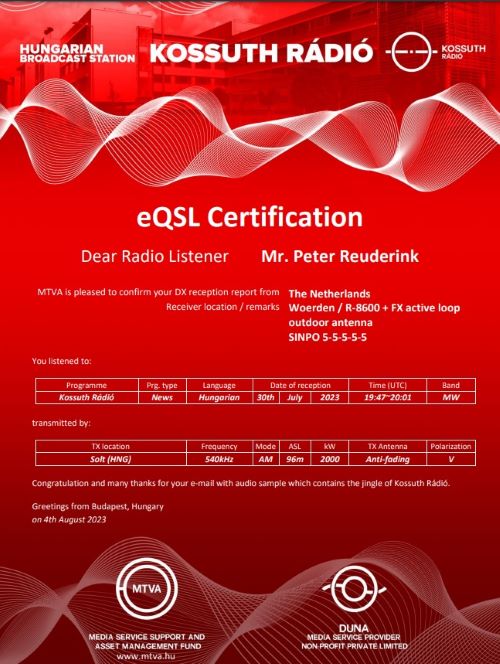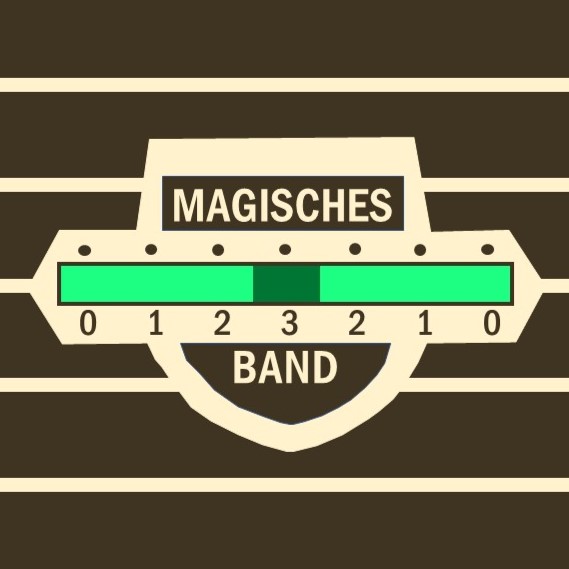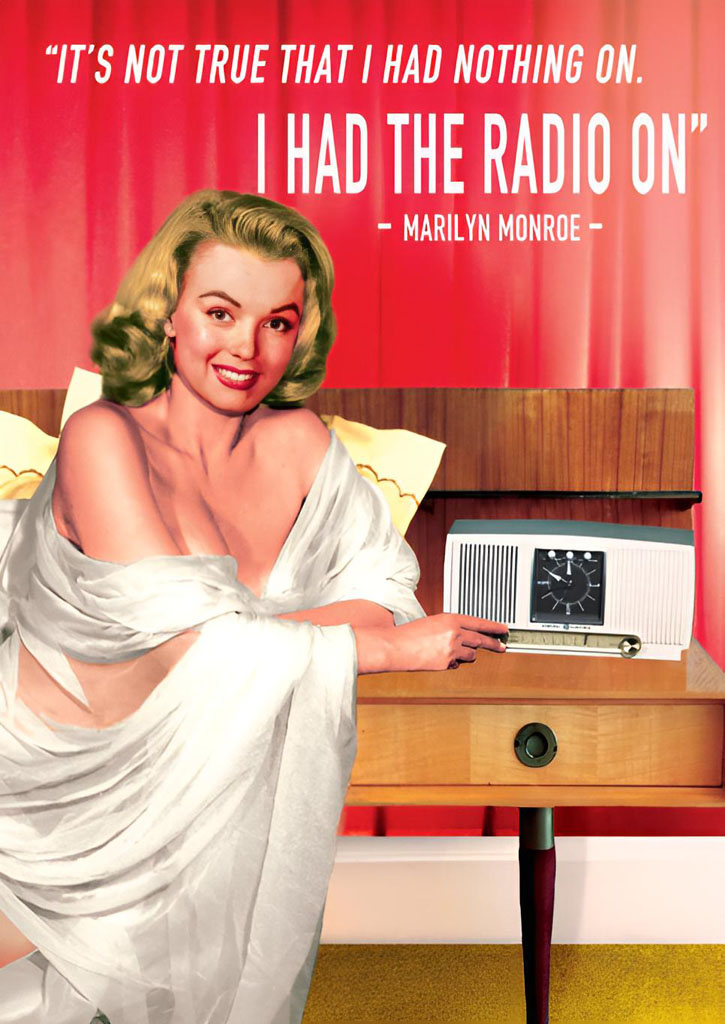Via Mr. Ivan Kovacs (Kovacs.Ivan@mtva.hu) I received my third QSL for a Hungarian medium wave transmitter. Kossuth Rádió, the first national radio program of Hungary is broadcast via a transmitter in Solt in central Hungary. With 2000 kW it is the most powerful station in Europe. And with 304 mtrs the antenna is also one of the highest structures. Of course it targets Hungary, but also the Hungarian speaking minorities in many other countries in Central and East Europe. Kossuth Rádió is named after Lajos Kossuth, a famous politician who fought for freedom of the press in Hungary.

The eQSL for Kossuth is red, similar eQSLs from Nemzetiségi Rádió and Danko Rádió are orange/green and purple. I think I’ve seen a green eQSL for Petöfi on the internet, but like Bartók Radio that’s FM, and not as easy to receive overhere in The Netherlands.



yes I own such a QSL printout for Petöfi which I have received on 93,1 MHz originating from Györ. it is mint green indeed!
I still miss one for Bartok as this country is difficult to receive on FM from Germany. tropo distance is a bit too far from this far up north, while ES is pretty close (below 1000 km) and rare.
but in the past I managed to catch Kossuth on 89,9 MHZ with RDS even while my local NDR 3 transmitter was active. and I also have this one verified, the same for 95,9 Pecs.
Bartok frequencies are very high up in the band above 104 MHz mostly, it was the old MR 1 network chain. this is difficult with all the commercial radio in Germany in this range as wwell as E skip is mostly active on the low band around 87.5 until 96 or 100 Mhz. it needs good condx.
but I will try to pick up the only low frequency of Bartok which is 90,7 MHz this year.
73+55 PFM
Hi Don. Yep the FM bands are pretty crowded here in The Netherlands as well. And living in Utrecht means that I’m living in the centre of the Netherlands, so I’m surrounded by all the provincial stations. That said, this summer I intend to install a better FM antenna and put a little bit more effort into it. Question to you: which antenna do you use (I am thinking of a 5 elements Yagi given space restrictions), and which polarization? In the old days everything was horizontal, but that seems to have changed while I was away from the radio in recent years.
I operate a 5 element antenna by Triax, for about 20 years now.
The experts say that during E-Skip the polarization and / or direction doesn`t matter and indeed, I have well received signals with RDS and in full stereo (incl. radiotext) on a portable using a telescopic antenna.
However, living in Germany I have experienced two interesting facts after all those years:
my Triax FM-5 antenna is directed south/east . unfortunately, I have a strong local in that direction but this direction does provide extremely good signals from all the Balkans and Greece , stations are audible when they are not even on a good portable as the ATS 909 , and what is even more interesting, at the same time when on a portable I had Avtoradio Ukraine on 91,7 MHz , with the Triax I heard RSO from greece simultainly the same minute!
and this direction does also bring in lots of Italians from the Bari area, and is good for spanish signals, too. Spanish with a 5 element pointed south east (wrong direction for Spain…) does provide at least equal signal strength and quality as a telescopic on a portable device does.
so I would not change a bit , as I can highly recommand using a 5 element direction South East. it gives me all the interesting countries during May, June and July such as Albania, Crna Gora, Macedonia , Hrvatska, Srbia etc.
personally I would say, it DOES make a difference. as this 5 element toward South East does e.g. never bring in Finland or Sweden (while a portable on telescope does, at the same time).
Thanks for all the useful information Don.
In as far as telescopic antennas go, yeah I vividly remembered that I caught many Spanish stations on my Grundig Satellit 3400 with its telescopic antenna. But that was in the 80-ies, I lived in the North Holland province, in the NW of the country, far from other provinces or Belgium/Germany. Commercial stations were not present, and there were very few strong signals in my location.
From my current location in Woerden I can actually see the huge IJsselstein antenna to the SE from the top floor of our house (370 m tall, 14 kilometers from here), and it hosts strong transmitters. But I will definitely try a 5 element this year pointing south, and let’s see what happens.